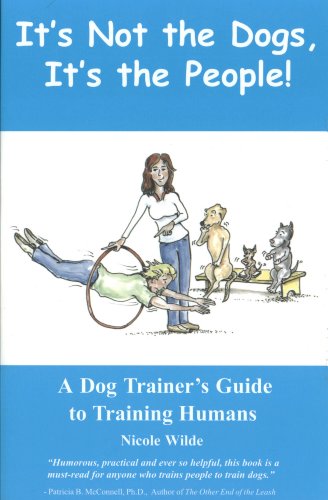It's Not the Dogs, It's the People! A Dog Trainer's Guide to Training Humans (Train the Trainer Series Book 2)
amazon.com
It's Not the Dogs, It's the People! A Dog Trainer's Guide to Training Humans (Train the Trainer Series Book 2)

Break things into small, achievable pieces.2. Convince them there is something in it for them.3. Show immediate results, no matter how small.
"Difficult" is a matter of perception. Judging people rude, obnoxious or otherwise difficult can impede our ability to deal with them effectively. When we label people, our perceptions of any future actions are colored by that initial assessment. Our responses will be as well.
Alternate between short explanations, moving exercises and stationary ones.
Start sentences with phrases such as "Let's try..." or "Here's something I've found helpful" rather than "You must..." or "You should".
Framing things in a positive light gives clients a mental picture of what's in it for them if they comply.
Be specific in yourpraise. Rather than the general "That's better," say "Your timing was much better that time" or "That's the body posture we're looking for."
Find something the person is doing right and comment on it. Then make suggestions for improvement.
frame suggestions in a positive light. Instead of snapping, "That's wrong, Dolores!" we'd offer, "Very good, Dolores! Now, the next time, let's try bringing the bar down a bit slower."
Continually assess your clients' skill levels and observe their movements as you would a dog's.